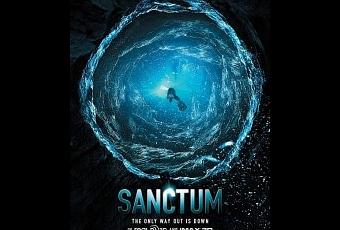
Whatever his faults as a filmmaker may be, Cameron would never make an adventure flick that felt this bland and generic. Which is fine and all, but I'm not sure the combination does anyone any favors. Most likely, Cameron served as an investor and consultant to "Sanctum" director Alister Grierson, lending the project his imprimatur, his expertise in underwater photography and his 3-D digital technology. I don't just mean that nobody in the general public knows, although that's true nobody in the movie industry really knows either, except that it almost never describes anyone who played a hands-on role in making a film. And then there's the fact that nobody knows what an executive producer is or does. In one of those Hollywood marketing gambits that's simultaneously truthful and intended to spread confusion, "Sanctum" is described as a film "from executive producer James Cameron, the creator of 'Titanic' and 'Avatar.'" In some ad copy, the words "executive producer" are omitted, and in all cases they're in teeny little letters.

James Cameron - or his company, or at least some people he's presumably met - tries to steal a march on Herzog with the far more conventional 3-D action saga "Sanctum," which could also be titled "The Cave of Aussie Arse-Kickers" or "The Cave of Holy Crap That's a Lot of Water" or "The Cave of I Love You Dad You Impossible Bastard." Having any camera near that much water is problematic, the particular issue that comes up when recording 3D, stereo space, is that the water may splash one lens, but not the other.As you may have heard, Werner Herzog's forthcoming subterranean documentary "Cave of Forgotten Dreams" strives to push 3-D technology in new and more adventurous directions. As mentioned, they found the physical needs of the story - working with actors on cables in dangerous situations, the heat, the cold, and of course working in and around (literally) tons of water, to be the most difficult aspect of physical production.

They shot most of the film on a stage, with the underwater work done in a tank, as it was impractical for them to attempt shooting an ambitious 3D production on locations where control is limited. The team had visited the set of Avatar and were aware of some of the challenges inherent in working with 3D, and as such, they built their sets specifically to work around said challenges.

Take a look at the trailer below, and note the final moments, as Josh seeks even the smallest air pockets as he clings to life this was the most effective scene that we were able to see.Īs to the physical production, Sanctum, literally, used the same cameras that were utilized on Avatar, so they were working with 2007 technology.


 0 kommentar(er)
0 kommentar(er)
